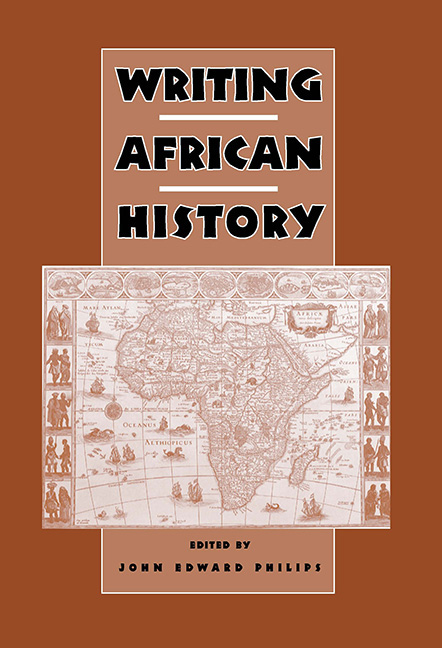Book contents
- Frontmatter
- Dedication
- Contents
- Acknowledgments
- Introduction
- Part I Background
- Part II Sources of Data
- Part III Perspectives on History
- 11 Data Collection and Interpretation in the Social History of Africa
- 12 African Economic History: Approaches to Research
- 13 Signs of Time, Shapes of Thought: The Contributions of Art History and Visual Culture to Historical Methods in Africa
- 14 Methodologies in Yorùbá Oral Historiography and Aesthetics
- 15 Local History in Post-Independent Africa
- 16 Africa and World-Systems Analysis: A Post-Nationalist Project?
- 17 “What Africa Has Given America”: African Continuities in the North American Diaspora
- 18 History and Memory
- 19 Writing About Women: Approaches to a Gendered Perspective in African History
- Part IV Conclusion
- Contributors
- Index
- Miscellaneous Endmatter
13 - Signs of Time, Shapes of Thought: The Contributions of Art History and Visual Culture to Historical Methods in Africa
from Part III - Perspectives on History
Published online by Cambridge University Press: 11 May 2017
- Frontmatter
- Dedication
- Contents
- Acknowledgments
- Introduction
- Part I Background
- Part II Sources of Data
- Part III Perspectives on History
- 11 Data Collection and Interpretation in the Social History of Africa
- 12 African Economic History: Approaches to Research
- 13 Signs of Time, Shapes of Thought: The Contributions of Art History and Visual Culture to Historical Methods in Africa
- 14 Methodologies in Yorùbá Oral Historiography and Aesthetics
- 15 Local History in Post-Independent Africa
- 16 Africa and World-Systems Analysis: A Post-Nationalist Project?
- 17 “What Africa Has Given America”: African Continuities in the North American Diaspora
- 18 History and Memory
- 19 Writing About Women: Approaches to a Gendered Perspective in African History
- Part IV Conclusion
- Contributors
- Index
- Miscellaneous Endmatter
Summary
A river that forgets its source, dries up
—Yoruba Proverb
What is art? What is art history? How does art history relate to other kinds of art studies, to history, and to the emerging field of visual culture? These and other issues are discussed in this two-part chapter. Part I considers the following topics: 1) an African understanding of “art,” 2) definitions and discussions of concepts and methods in art history, 3) a comparison of the disciplines of art history and history showing their commonalities and differences and how they may complement each other to enrich and deepen our understandings of Africa's past, and 4) an assessment of the new transdiscipline of visual culture. Part II provides an overview and assessment of art-historical and visual culture studies in Africa and the African Diaspora over the last forty years that historians of Africa may find relevant and useful.
Art is a visual documentation of a creative process shaped by historical and cultural circumstances. African cultures have countless distinct, explicit, and complex terms and concepts for objects and processes that are called “art” in the “western” world. For example, Yoruba-speaking peoples in Nigeria and Benin call art ona—a complex term that encompasses ideas of the beautification, embellishment, decoration, skillful manipulation, and transformation of media (wood, clay, iron, bronze, pigments, etc.), and the play (ere) of images and ideas. Ona is evocative form—something meant to move and enlighten its audiences, helping them to experience deeply and to make sense of their world.
If we take a Yoruba understanding of “art” (and this may vary greatly in other African cultures, as it does globally), how does one analyze “evocative form” before interpreting its historical and cultural meanings or significance? We begin with form, the visible object, and analyze its visual elements—line, color, shape, texture, size/scale, composition—in order to record our perceptions and to reflect on them in order to understand the object's style. Style is the synthesis of its distinctive characteristics or expressive qualities and reveals how/why the work is evocative. With this analysis of form and style, we examine the work's content, meanings, or significance—the cultural and historical ideas, perceptions and attitudes it expresses. This aspect of art history has been called the study of iconography, the analysis of symbolic meanings of images, or its broader, more interpretive version, iconographical interpretations/iconology.
- Type
- Chapter
- Information
- Writing African History , pp. 329 - 347Publisher: Boydell & BrewerPrint publication year: 2005

